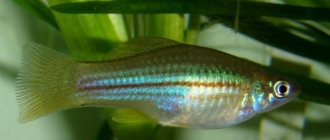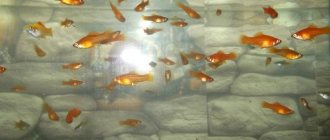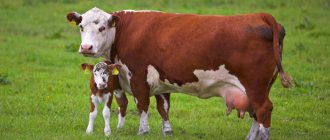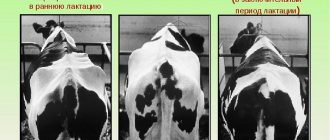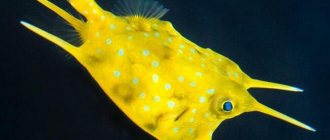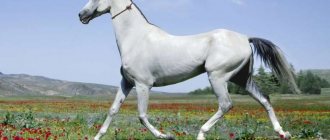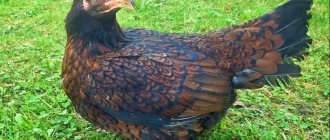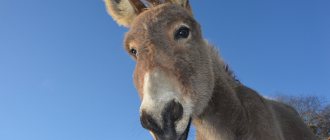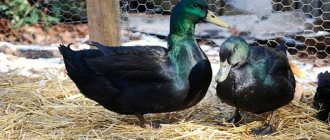The first mention of the variety was in Bern in 1806, Switzerland. Since its appearance, 80 years later, the breeding of Simmental dairy cows has been practiced on all six continents.
In the 19th century, Simmental spread to Eastern Europe and Russia, eventually reaching South Africa in 1895. Guatemala imported the first animals in 1897, and Brazil and Argentina in 1918.
In the twentieth century, in October 1968, the American Simmental Association was created. After this, the burenka began to be popularized in Great Britain, Ireland, Norway and Sweden (in 1970). The first Simmental bulls were imported to the USA in 1971, Australia received their semen and the animals themselves only a year later, in 1972.
In the former USSR, representatives of Simmental cattle accounted for ¼ of all cattle. In 1990 there were 12,849,800 heads. In 2003, there were 2,970,400 cows in the Russian Federation.
Currently, the American Simmental Association annually registers about 80,000 new animals of this color. The total number is estimated at 40 to 60 million representatives worldwide. More than half of them are located in Europe.
Characteristics of Simmental cattle
These cows are quite popular in all countries. Even despite their large size, they have a calm and obedient character. There are also no problems when breeding the color, which is one of the key points when choosing a cow. Its other positive characteristics:
- resistance to stress;
- good immunity;
- quick adaptation in any environment;
- high life expectancy - up to 15 years;
- production of fatty milk;
- tender, flavorful meat.
The negative aspects of the characteristics of the Simmental breed are:
- expensive;
- variable endurance;
- high requirements for feed and pasture;
- calving is not always easy;
- difficult to grow if there is no grain or little of it.
Origin story
The Simmental breed is very ancient; Switzerland is considered its homeland. Back in the 5th century, the ancestors of such cows were brought to this country. Selection work lasted several centuries and ended only in the 20th century.
The breed was named after the Symme River, which flows in the canton of Bern in Switzerland. Simmentals have spread very quickly, as they are perfectly acclimatized to any conditions. In Russia, such animals appeared in the 19th century.
INTERESTING! Based on this breed, many others were obtained: Fleckvieh, Hungarian Pied, Montbeliarde, etc.
Description of the Simmental breed
The appearance of Simmentals allows them to be distinguished from other individuals. Their features are:
- gray or red-motley color;
- white head;
- colored ears with reddish-yellow hair;
- wide chest;
- elastic leather of medium thickness, which is easily pulled off;
- pinkish tint of the nasal mucous membranes;
- horns, their tips, hooves - white or yellowish;
- white, yellow or brown tail tassel.
Interesting
Most cows have pigment around their eyes, which helps reduce vision problems caused by bright sunlight.
Animals are bred all over the world due to the high income from the sale of beef. When breeding a cow, you can reduce or increase the ability to reproduce offspring with the help of proper nutrition and selection of an insemination bull.
Firm red meat with minimal fat is obtained due to heavy muscles, great length and overall weight of the animal.
The Simmental meat breed ensures rapid growth and high profitability of meat products. As a result, the buyer receives delicious marbled beef and high-quality milk.
Suit standards
| Height at withers | 1.35—1.50 m |
| Height at withers of a bull | 1.50-1.60 m |
| Body length | 1.60—1.65 m |
| Pastern girth | 0.20-0.21 m |
| Adult heifer weight | 0.7—0.9 t |
| Bull weight | 0.9—1.2 t |
Main settings
The set of fixed characteristics of the breed is the main criterion influencing the farmer’s choice. The main positive characteristics of Simmental bulls include:
- Adaptability to any living conditions. This is evidenced by the prevalence of the breed in all corners of the world.
- Strong physique. Animals have a powerful skeleton and a muscular body. Individuals are proportionally built.
- The color is light, spotted. The most common color is milky white with reddish spots. Bulls are distinguished by a darker color. Around the horns and on the limbs the fur is white. The nasal planum is also white, and one of the characteristic features is the large pink nostrils. Animal skin is dense, elastic and has a high value in the leather market.
- Purebred bulls have horns, but polled Simmental bulls are found in many regions.
- Bulls reach a height of 1.5 m. Females are slightly lower - 1.3-1.35 m. Animals are 1.5-1.6 m in length.
- The internal organs have the correct structure. Animals do not have problems with the musculoskeletal system; they reproduce offspring with ease.
- The legs are long and straight. The hooves are pink in color.
- The tail is long and has a characteristic tassel at the end. Sometimes the tail exceeds the height of the animal and interferes with walking. Then the owner has to tie the tail or resort to surgery to shorten it.
A sign of a lack of purity in the breed is spots on the eyelids and nose. Simmentals should not have any markings.
Simmental may differ slightly. The presence of intrabreed characteristics is the result of selection work, during which the types of Simmental were formed:
- Lactic.
- Mixed. The emphasis is on consolidating the best indicators of milk yield and milk quality.
- Dual use. This is the most common type. These bulls have excellent meat, and the cows have milk.
- Moderately meaty. Cows of this species are larger and more well-fed.
- Radically meaty. Bulls are characterized by increased muscularity.
The differences in types can be seen even from photos of Simmental bulls:
Most farms are engaged in breeding dual-purpose cows, the performance of which allows them to make a profit from the sale of dairy products and meat.
Getting meat
The meat is tasty, not very fatty, the muscles are not large. The weight of the bones is higher than that of other suits. It is 21-24% in young animals aged from one to two years.
Fat content reaches 17%. The slaughter yield of meat is about 65% for bulls, and for cows - 53-56%. This type of cattle is characterized by high weight gain throughout life. In order for you to receive quality meat, animal care technology must meet two criteria, namely:
- No dampness or drafts.
- Availability of high-quality feed, without wet silage.
The Simmental breed is known for its good productivity, which is closely related to its maintenance. You can’t believe in fairy tales that individuals don’t need anything, that they can live for 12 months without housing, or that they can eat anything. The individual may survive, but there will be no quality meat under such conditions.
Productivity
The skeleton of cows and bulls is quite strong and massive, but the amount of meat on it is also large. As a rule, it contains no more than fifteen to seventeen percent fat.
Average figures during lactation and best nutrition range from two and a half to six thousand kilograms of milk, but in some cases it reaches ten thousand. The average fat content of the product is three and a half to four percent.
In order to increase milk yield, it is important to feed cows with high-quality feed, fresh vegetables and fruits, and boiled potatoes. Animals have the following advantages:. Animals have the following advantages:
Animals have the following advantages:
- disease resistance;
- proportionally high income of meat and milk (on par with the Jersey cow);
- unpretentiousness of calves to keeping and raising;
- rapid weight gain;
- calm character;
- quick and easy adaptation to changes in living conditions;
- the possibility of crossing with other breeds with the prospect of improving productivity characteristics;
- protein-rich milk, suitable for making high-quality cottage cheese and cottage cheese;
- long lactation period.
In addition to high-quality and tasty meat and milk in large quantities, animals have another important advantage for rural areas - they can be used as draft animals. In the spring, with the appearance of green grass, feeding cows and bulls of the Simmental breed is greatly simplified. Usually the food they find in the pastures is enough for them
For drinking, there are usually always watering holes in rural areas. However, it is believed that the cow will return home on its own in the evenings after grazing if it is fed with vegetables and animal feed.
Usually the food they find in the pastures is enough for them. For drinking, there are usually always watering holes in rural areas. However, it is believed that the cow will return home on its own in the evenings after grazing if it is fed with vegetables and animal feed.
In the spring, with the appearance of green grass, feeding cows and bulls of the Simmental breed is greatly simplified. Usually the food they find in the pastures is enough for them. For drinking, there are usually always watering holes in rural areas. However, it is believed that the cow will return home on its own in the evenings after grazing if it is fed with vegetables and animal feed.
In mid-autumn and until spring, you have to feed the livestock yourself. To do this, you should stock up on eight to ten kilograms of hay per head per day. Don't forget about water. You can take animals to water or water them using water pipes, buckets and troughs.
Content Features
According to biological characteristics, Simmental cattle belong to the moderately early maturing group. It acclimatizes quickly, but requires good food, especially good quality hay. In poor climatic conditions, Simmental quickly degenerates. Basic rules of care:
- in the barn, maintain the temperature at about 4-20 degrees Celsius, avoid cracks and drafts;
- equip the room with a good ventilation system;
- Build barn floors from moisture-resistant materials (wood or brick);
- Build the sewer system according to the internal type;
- arrange a clean and dry bedding of straw, peat or sawdust;
- Organize winter walks for animals in a specially fenced area, where you regularly update a thick layer of bedding;
- in summer, take care to create a room that protects animals from sunlight and rain;
- feed them exclusively with water at a temperature of 18-21 degrees;
- Milk cows 4 times in the summer season and 3 times in winter days. It is better to always start milking at the same time, as the female easily gets used to the regime. At the right time, even if you suddenly forget about the need to start this process, the animal will notify you by mooing.
Important
You can milk a cow either with your own hands or using a milking machine. The breed tolerates this process well, unlike other varieties of cattle.
If you plan to keep the specimen in northern areas, then use a bed of manure for bedding indoors. This improves the temperature and microclimate in winter. Representatives easily tolerate frosts, up to -30, but do not get carried away with this, since warmth is the best option for any animal.
Feeding Simmental cows
Particular attention should be paid to the diet and nutritional regimen of representatives of the suit. The main food for this cattle is
- straw, hay;
- silage, root crops, green vegetation;
- flour from a mixture of dried herbs.
- vitamin-containing fertilizer in the form of a ready-made mixture.
The diet should be varied and correspond to the period and purpose of breeding the pet, based on the characteristics of its physiological development.
Be sure to follow cattle feeding standards. The menu for every day should be like this:
| Type of fattening Simmental cow | Volume |
| A mixture of boiled corn and water, as well as corn leaves | 2-3 liters of water, 1-2 kg of corn or 1 kg of leaves |
| Hay | 1-2 bales (from 8 to 10 kg) |
| Compound feed | 2-3 kg |
| Juicy feed | 3 kg |
| Cake | Mixed with succulent feed – 3-4 kg |
| Roots | As an additive to the above products, 1-1.5 kg |
Before giving grain, it must be sifted and boiled so that the individual does not damage its stomach with the thorny parts of the plants. In summer, the diet should include grasses from the field. To avoid overfeeding, spread out food over two to three days.
To achieve a high milk yield, ensure that the feeders are never left empty.
In the summer, during lunch, a cow that is on pasture can eat growing food. Therefore, it does not need to be fed. Remember that overfeeding can lead to poisoning, blockage of the esophagus or death.
The satiety of the individual will be visible by its rounded sides. In the case of a long period of average milk production, the proportion of nutrients can be increased by introducing heavier foods.
Main pros and cons
Farmers who have these cattle on their farms cannot praise them enough. Among the main advantages of the breed are the following:
- cows are unusually obedient and intelligent;
- the animals are very active and eat well, so they have a strong immune system;
- cattle adapt better to grazing in meadows, as they are more accustomed to rough types of feed;
- cows have a high possibility of giving birth to twins, which contributes to faster growth of the herd population;
- Simmentals are representatives of two directions - meat and dairy - and are very productive in both directions;
- animals can perform heavy types of agricultural work;
- calves are not capricious in their choice of food; they are milk-fed for a long time, which allows them to save on other feeds;
- if the animals’ diet is balanced, then they gain weight by 0.8–1 kg daily;
- Simmentals adapt well to any living conditions;
- stud bulls are usually used for mating with other dairy breeds to improve their milk quality;
- The skin of these animals is highly prized.
Simmental cows at the feeder
However, when raising this cattle, you should pay attention to some disadvantages inherent in Simmentals:
- The diet should include high-quality components. This is especially true for hay and forbs in pastures.
- Cows require careful care and good maintenance. Otherwise, the breed may begin to degenerate.
- Animals' limbs are not always positioned correctly.
- Another flaw is a slight sagging of the spine.
- The anterior lobes of the udder are less developed than the posterior lobes.
- Hair growth on the udder is not a very good indicator for cows of this type.
Calving of Simmental cattle
The first birth of heifers occurs in the third year of life. Early calving is undesirable for her health. Developed genitals are a guarantee of successful reproduction of offspring.
The interval between births is 390-400 days. Pregnancy proceeds without difficulties: Simmental heifers, as a rule, easily cope with childbirth. Once calving occurs, she recovers in a short period of time and will provide proper care for her calf in the future. The owner only needs to wash the cow and its fetus after giving birth and provide fresh bedding in the room. Calves can be fed artificially; this is not critical for this color. But the natural way of feeding should be based exclusively on milk. The population increases in a short period of time over 10 years.
Simmental calves
A cow can bear from 7 to 9 calves. The mortality rate among young animals is about 5%, which is a very low figure.
After birth, calves almost immediately stand on their feet. They are born weighing up to 50 kg. The increased maternal instinct of females contributes to a high survival rate of infants, and milk helps in growing and providing immunity.
Simmentals often give birth to twins. After calving, ensure calves do not drink too much colostrum as this can lead to stomach problems. Increase your portion of plain milk.
The weight of newborn calves is 34-46 kg, after 6 months they reach 180-225 kg, and per year they reach 230-350. Weight gain occurs by approximately 850-1100 grams every day. In a year, the difference between a male and a female will be more than 100 kg.
Simmental calves grow quickly, but the main condition for this is that they do not overeat or starve. Bulls mature at the age of 5 years. After this age, males become aggressive.
What to look for when purchasing
All the advantages make the Simmental cow the most favorite cow among Russian farmers, even though the price is very high, especially when it comes to a bull. But it quickly pays off, based on the description of the Simmental breed and the characteristics of its breeding.
Do you want to be sure that what you have in front of you is Simmental? Ask for the animal's pedigree.
If you are offered a six-month-old calf, then know that it should weigh 4 times more than at birth, that is, about 180-185 kg. Do not choose a heifer or steer that weighs less as this is not normal.
You should not choose a Simmental breed based on a photo or video - trust your eyes. Disadvantages that are revealed directly upon examination are:
- sagging back and narrow chest;
- incorrect positioning of the hind hooves;
- poor development of the front udder or its fat content.
What does a purebred animal look like?
Ancient historical roots still leave their mark on the appearance of the Simmental breed. These are very large animals with wide bones and well-developed muscles. At the withers, the cow reaches one and a half meters, length - 160 cm. The croup is wide, the neck is short and muscular. In bulls, the withers sometimes bifurcate. A rough, large foreheaded head has been preserved from ancient ancestors.
Signs of a pure breed are light eyelids and a pink nose. The tips of the yellow, well-developed horns usually have a brownish tint and are curved forward. Simmentals are characterized by a pale-colored skin and a white head, thick hair on the withers and belly. The skin is thick, heavy and elastic. A high tail with a large tassel can be so long that you have to either tie it up or trim it.
Diseases
These cows are only at risk of mastitis. Its reasons may be:
- udder defect;
- low body height;
- violation of milking rules;
- udder injury and infection;
- conclusion of the postpartum period;
- endocrine disorders in the body.
In addition to treatment, disease prevention plays an important role, the procedure includes the following actions:
- prevention of udder hypothermia;
- eliminating injuries and infections through veterinary care;
- compliance with nutrition and care rules.
If a veterinarian offers to purchase a course of antibiotics for an animal, then the patient’s milk should not be given to young calves for 5 days after the end of treatment and not consumed by themselves. You should not allow your cow to get fleas and lice, which is why take her outside a couple of times during the winter and inspect her completely. Do not allow cats and dogs that carry parasites into the premises.
Young cattle suffer the most from lice and fleas.
Where and at what price to buy a Simmental breed
They can be purchased in a large complex or on a private farm. For example, in KamArgo LLC, a company that has been working in the livestock sector for more than 4 years. Mainly engaged in the sale and transportation of cattle. The company is located in Naberezhnye Chelny, Republic of Tatarstan.
You can also buy cows in:
- Trend-Agro LLC, in Magnitogorsk.
- Grodno breeding enterprise, Republic of Belarus, Grodno region, Grodno district. The company was founded by a private owner.
- EkoNiva LLC, Voronezh region, Liski city.
All of the above companies deal with Simmental oil.
Average price of Simmental
Many private advertisements are posted on the avito website. The price starts from 10 thousand, depending on the age, sex of the animal, its fatness, productivity and health. The price is also affected by the region where the seller lives. For example, in the Voronezh region you can buy a heifer from 1 to 3 months old for 10 thousand rubles, and in Priyutovo, Bashkortostan, it will cost 16 thousand. In the village of Lokot, Bryansk region, Simmental will cost 60,000.
Reviews about the breed
- Nikolai, 52 years old. From the point of view of the entrepreneur that I am, in 5 years Simmentals will be the leaders in all respects, since their genetics are very good. Unusually beautiful Swiss representatives. According to the total number of economically useful properties, Simmental is better than Holstein.
- Oleg, 48 years old. I really like Simmental. Firstly, she has enough tasty milk. Secondly, you can milk an adult cow even 4 times a day. This is very beneficial for farmers who keep pets to sell dairy products: milk, cottage cheese, kefir. They also adapt well to harsh conditions. Since I live in the north, this point is very important to me.
Subtleties of breeding young animals
Animals reach sexual maturity at the age of 2.5 years. The first calving usually occurs at 31 months. A cow can give birth to a new calf once every year and a half. Pregnancy lasts 283 days. When giving birth, a cow practically does not require human assistance.
To recognize the ideal period for mating, it is necessary to identify the period of heat in cows. At this time, certain changes occur in the female’s behavior:
- she becomes more affectionate;
- moos for no reason;
- takes a mating position, tries to mount other individuals;
- activity increases;
- wanders around fences for no reason;
- there is a noticeable deterioration in appetite.
Bulls sense very clearly the period when a cow is ready to mate and behave more aggressively. This is the second sure-fire way to determine the optimal time for mating.
The calf's stall should be dry and clean. The baby himself should be cleaned with a brush, heavy dirt should be washed off with water and wiped with a clean, dry cloth.
After a month, the animal can be released for short walks, each time the time spent on the street increases. In the summer, it is necessary to accustom your baby to eating grass in the pasture.
Simmentals are a universal breed of cows. With minimal effort, they can bring their owner both excellent meat and a lot of tasty milk. For any farmer, Bernese cows are very valuable and loved due to these qualities.
